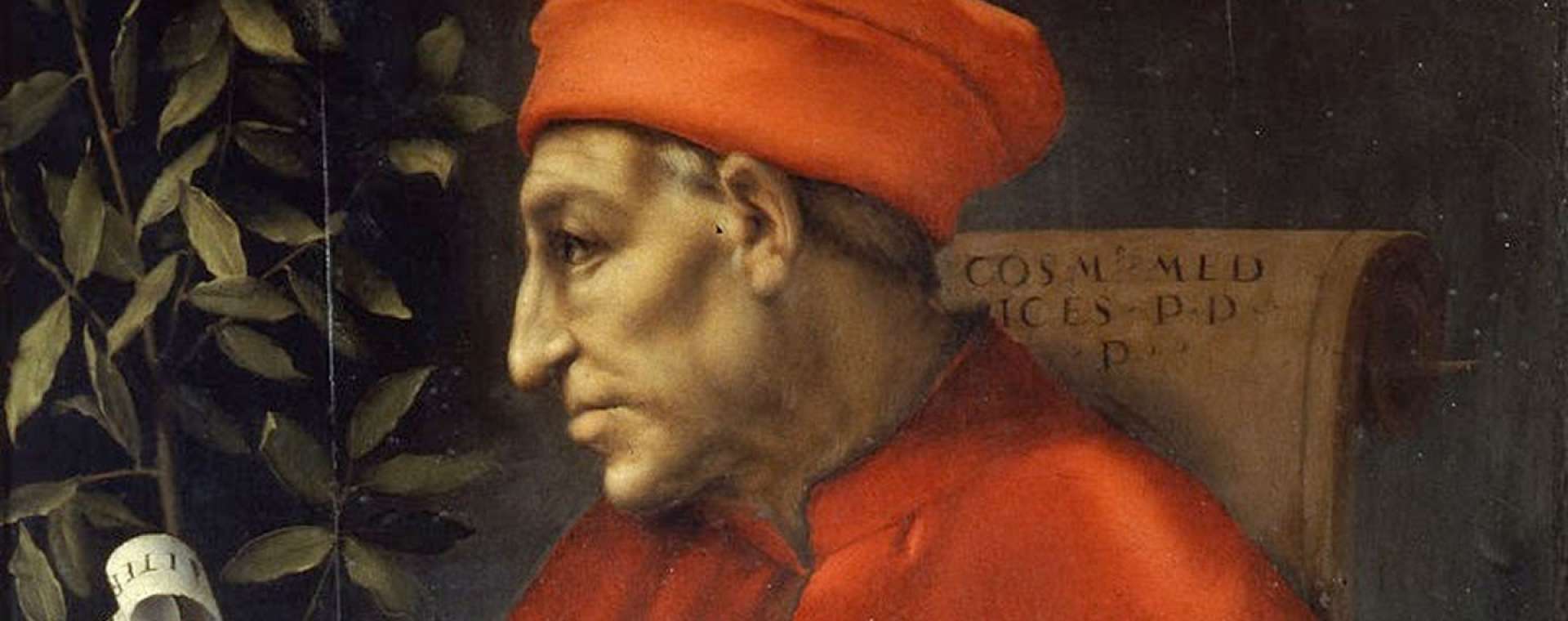(Warning: contains major spoilers for 2016 Netflix show, Medici: Masters of Florence Season 2 airs in 2018.)
In the lore of tour guides and travel books, Cosimo de’ Medici (aka Cosimo “il Vecchio”) is the founder of Renaissance Florence; a statesman, banker, Humanist and Florentine patriot. Strictly speaking, he was a private citizen like others among the rich. Yet his tomb in the Medici church of San Lorenzo is inscribed Pater Patriae, “Father of the Homeland”, an honorary title conferred on him by Florence’s governing council, the Signoria.
The Cosimo portrayed in Netflix’ “Medici: Masters of Florence” is a bit different. He’s a sullen, unsympathetic and unfaithful character, quick to suspicion, ruthless in vengeance, and fond of wallowing in self-pity. Powerful, certainly, but lacking the magnetism of his mythical/historical counterpart.
Which version is closer to the real Cosimo, as far as we know?
Horrible history?
“Medici: Masters of Florence” treads a fine line between historical epic and medieval Dallas. However, its central conflict is fictionalised pretty accurately.
There was a long-running power struggle between Cosimo and Rinaldo degli Albizzi; the beef certainly was personal, political and loaded with old vs. new money resentment. Cosimo was imprisoned and in 1433, exiled (initially to Padua). Albizzi did plan a coup in his absence, and was banished, but not murdered. In fact, he lived to his seventies. He spent most of the 1430s as a thorn in Medici Florence’s side, until dreams of a return were ended in 1440 at the Battle of Anghiari.
Pope Eugenius IV was present in Florence at the time of the conflict. However, he was more sympathetic to the Medici, rather than Albizzi. There’s even a statue of him on the Florence’s cathedral facade.
The show’s other “villain” is Andrea de’ Pazzi. Yet far from being an enemy of the Medici, he was actually a firm ally. He certainly did not order the murder of Cosimo’s brother, Lorenzo, who died at the Villa Medici in Careggi in 1440 (by which time, Lorenzo had been married almost 25 years and had 2 sons). Season 1’s soapy Pazzi subplot does foreshadow a real event a generation later, the Pazzi Conspiracy, rumoured to be the heart of Season 2.
Though simplified for TV, elections to the Signoria were absolutely as corrupt as the show portrays. Real-life Guadagni was much less scrupulous than the Brian Cox version. He took money from both the Albizzi and the Medici during their feud.
Devil in the detail
Plenty of detail about the Medici dynasty has been altered for dramatic effect. Cosimo’s father, Giovanni de’ Medici, was not poisoned. It was also he, not Cosimo, who commissioned Brunelleschi to work on Florence’s cathedral dome, although Cosimo also became a great patron of the arts and a friend of sculptor Donatello.
Cosimo was a twin, but Damiano died as an infant, not in a childhood accident. He also had 2 sons, although only Piero appears in the TV version. Cosimo did have a slave mistress he bought in Venice. She was known as Maddalena, she did bear him a child, and the child was raised a Medici (Carlo de’ Medici).
However, by the time Piero’s son (Lorenzo-to-be) was conceived — announced in the Season 1 finale — Piero already had 3 daughters.
For the most part, roles for all female leads have been hugely enhanced for a modern audience. Public life in republican Florence was very patriarchal. Despite this, Lucrezia Tornabuoni, wife of Cosimo’s son Piero, did carve out a formidable reputation. Shrewd, highly intelligent and educated, she was a key advisor to both Piero and her own son, Lorenzo “the Magnificent”.
Location, location, location
You might assume staying in one of our villas near Florence puts you within reach of many sights and locations in the TV show. In fact, little was filmed in Florence.
Exterior shots of the “Medici palace” are actually Palazzo Piccolomini in Pienza. The palace appears in scenes with Pope Eugenius IV, whereas it was actually built for one of his successors, Pius II. Eugenius was dead for a decade before the whole square, Piazza Pio II, had even been commissioned.
Ironically, one of the only rooms in the show actually inside a real Medici palace has a portrait of Cosimo’s grandson frescoed on the walls. This boy, who became Lorenzo “the Magnificent”, is only conceived at the end of Season 1.
Another well-used square — including for the procession of the Magi in the final scene — is Piazza Grande in Montepulciano. Its Palazzo Comunale stands in for Florence’s Palazzo Vecchio (it was designed deliberately to resemble it). The much featured church with the rough facade is Montepulciano’s cathedral.
Our Montepulciano villas are also near the Netflix stand-in for Santa Maria Novella, where the real Pope Eugenius did stay when he was in Florence. Netflix’s version is actually San Biagio, built just outside Montepulciano’s walls, and only finished 130 years after Eugenius’ was dead.
Locations close to our Lazio villas also feature heavily. Streets in Viterbo stood in for medieval Rome. Many internal palace sets — including the homes of Andrea de’ Pazzi, Cardinal Cossa and Giovanni de’ Medici — are actually parts of the Castello Orsini-Odescalchi in Bracciano.

